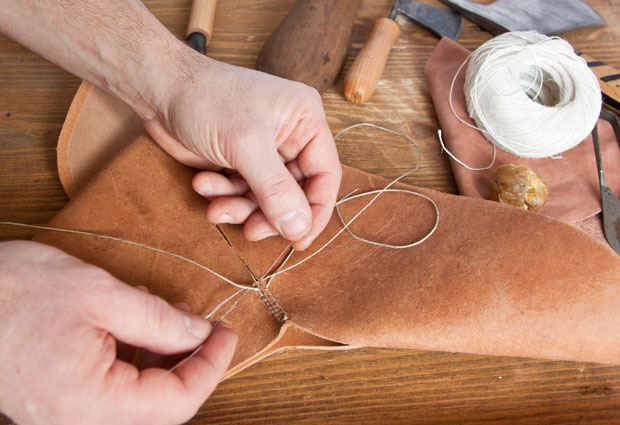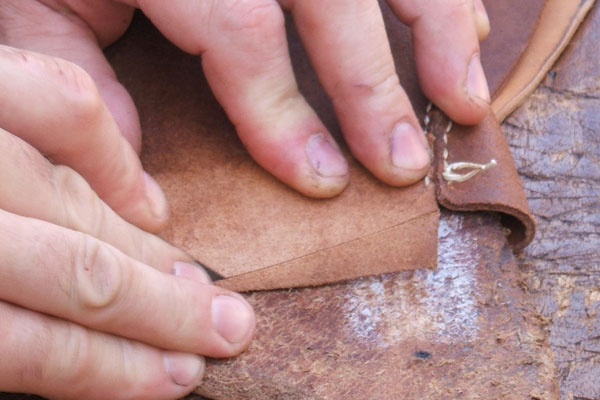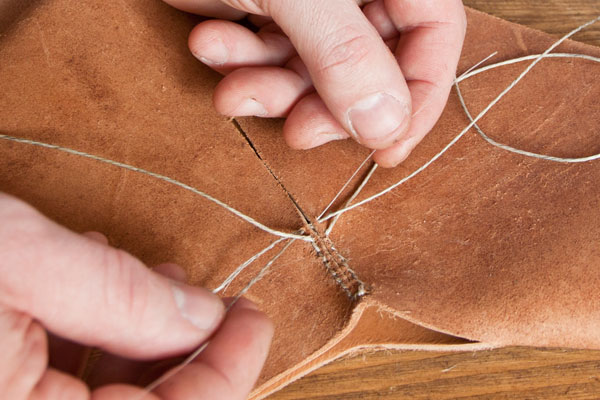My recostruction : research and tradition
My reconstruction of historical shoes is based on the knowledge of the use of materials and construction techniques which have had a continuous evolution during the centuries.
Until the nineteenth century, the seams that held together the various components of the shoes were hand made using natural fibers, most of the times linen wires and hemp. The uppers were made of several different types of stitches which linked the various pieces, including reinforcement and top band.
In medieval times stitches were hidden and turned inside the shoe to avoid that the wire could wear out due to the external exposure and the continuous use causing the separation of the parties. The shoes were basically made to last long and for the same reason also the union of the sole to the upper, until the end of the fifteenth century, was a turn shoe.
From the beginning of the sixteenth century, the construction of shoes evolved with the processing of stitching (welted shoe) that replaced the previous techniques improving the strength and the resistance of shoes.
As far as materials are concerned, calf or goat leathers tanned with natural substances were the most used in the production of shoes and boots.
Other more exclusive leathers such as the chamois leathers and the reindeer leathers were employed for the construction of shoes for special occasions.
The thicknesses of the leathers ranged from 0.8 to 2.5 mm for the uppers and up to 6 mm for the sole. In order to stress the social status in different ages, shoes were occasionally decorated with various techniques




